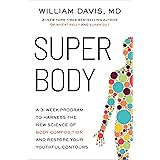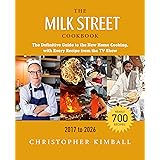Have you ever questioned where your calcium truly comes from, especially if you’re trying to reduce dairy or explore alternative diets? The video above offers a compelling glimpse into the most fundamental source of this vital mineral, challenging the common perception that milk is the ultimate or sole answer. It highlights a simple yet profound truth: calcium originates directly from the Earth, absorbed by plants, which we can then consume directly.
For decades, the message has been clear: “Drink milk for strong bones.” While milk undeniably contains calcium, the journey this mineral takes before it reaches our glass is often overlooked. As the video explains, cows consume grass, which has drawn calcium from the soil. This calcium then transfers to the cow’s milk, and subsequently to us. But what if we could bypass the middleman and access these real calcium sources directly?
Unearthing the Original Calcium Source: A Plant-Based Perspective
1. The Earth’s Elemental Bounty
The Earth’s crust is rich in essential minerals, including calcium. This bedrock of our planet serves as the foundational reservoir for all life-sustaining nutrients. Plants, with their intricate root systems, are nature’s masterful extractors. They draw these minerals, including crucial calcium, directly from the soil, integrating them into their cellular structures as they grow. This fundamental process makes plants the primary, original conduit for calcium into the food chain. Understanding this natural cycle helps us appreciate that plant-based calcium isn’t a new concept, but rather a return to the source.
2. The Journey from Soil to Supper
Consider the humble cow, as mentioned in the video. Its incredible ability to convert grass into nutrient-rich milk is a testament to the power of plants. The calcium found in cow’s milk doesn’t materialize out of thin air; it comes from the grass the cow eats. This grass, in turn, pulled its calcium content directly from the soil. Therefore, when we consume milk, we are essentially consuming calcium that has made a three-step journey: soil to grass, grass to cow, and cow to human. The video insightfully points out that we can simply get it directly by consuming the plant-based foods that absorbed the calcium in the first place.
Why Explore Dairy-Free Calcium Sources?
While dairy products have historically been a significant source of calcium for many, there are numerous reasons why individuals are increasingly seeking out plant-based calcium alternatives:
- Lactose Intolerance: A significant portion of the global population struggles to digest lactose, the sugar found in milk, leading to digestive discomfort.
- Dietary Preferences: The rise of vegan, vegetarian, and plant-forward diets has led many to consciously avoid animal products.
- Health Considerations: Some individuals choose to limit dairy intake due to concerns about saturated fat, hormones, or potential inflammatory responses.
- Environmental Impact: Dairy farming can have a substantial environmental footprint, prompting some to choose more sustainable options.
For these reasons and more, understanding diverse calcium sources beyond dairy becomes not just beneficial, but essential for maintaining optimal bone health and overall well-being.
Abundant Plant-Based Calcium Sources You Can Enjoy Directly
The great news is that nature provides an incredible array of plant-based foods packed with calcium. As the video briefly touches upon, we don’t need to eat grass to get our fill; we simply need to choose the right plant foods. Here are some powerhouse options, extending beyond the sesame seeds highlighted:
3. Sesame Seeds: A Calcium Powerhouse
As the young woman in the video wisely suggests, sesame seeds are an exceptional source of plant-based calcium. Two tablespoons of sesame seeds, when soaked overnight and blended with water, can provide as much calcium as a glass of cow’s milk. This ancient seed is not only rich in calcium but also offers magnesium, phosphorus, and healthy fats. Incorporating sesame seeds into your diet is easy: sprinkle them on salads, stir-fries, or blend them into tahini for dips like hummus.
4. Leafy Green Vegetables
Dark, leafy greens are calcium champions. Vegetables like kale, collard greens, turnip greens, and bok choy are excellent sources. While spinach also contains calcium, it’s bound by oxalates, which can slightly reduce absorption compared to other greens. Despite this, a large serving of spinach still contributes significantly to your daily calcium intake. Aim to include a variety of these greens in your diet through smoothies, salads, or lightly steamed dishes.
5. Fortified Plant Milks and Juices
Many plant-based milk alternatives, such as almond milk, soy milk, oat milk, and rice milk, are fortified with calcium to levels comparable to or even higher than cow’s milk. Always check the label to ensure they are calcium-fortified and preferably also fortified with Vitamin D, which is crucial for calcium absorption. Similarly, some orange juices and cereals are also fortified, offering another convenient way to boost your intake of natural calcium sources.
6. Beans and Legumes
Legumes like white beans, black beans, and chickpeas are not only packed with protein and fiber but also provide a good amount of calcium. A cup of cooked white beans, for example, can offer a substantial portion of your daily calcium needs. Lentils and edamame also contribute to your calcium intake. These versatile foods can be incorporated into soups, stews, salads, and countless other dishes.
7. Nuts and Seeds Beyond Sesame
While sesame seeds take center stage, other nuts and seeds are also valuable plant-based calcium sources. Almonds are particularly noteworthy, providing a good amount of calcium along with healthy fats and Vitamin E. Chia seeds and flaxseeds, known for their omega-3 content, also offer a modest but beneficial amount of calcium. Sprinkling these over yogurt, oatmeal, or adding them to baked goods is a simple way to enhance your diet.
8. Certain Fruits
While typically not the highest source, some fruits contribute to your overall calcium intake. Figs, especially dried figs, are surprisingly rich in calcium. Oranges and berries also provide smaller amounts. Pairing these fruits with other calcium-rich foods can create a synergistic effect for optimal nutrition.
Optimizing Calcium Absorption from Plant-Based Foods
Simply consuming calcium isn’t enough; our bodies need to absorb it effectively. Here’s how to maximize your intake of plant-based calcium:
- Ensure Adequate Vitamin D: Vitamin D is a critical partner to calcium, as it helps the body absorb calcium from the gut. Spend time in the sun, consume fortified foods, or consider a supplement if your levels are low.
- Balance Oxalates and Phytates: Some plant foods, like spinach and whole grains, contain compounds called oxalates and phytates, respectively, which can bind to calcium and reduce its absorption. However, their effect is often exaggerated, and cooking (especially boiling or steaming) can reduce oxalate levels. Eating a varied diet generally mitigates any significant concerns.
- Magnesium and Vitamin K2: These nutrients also play roles in bone health and calcium metabolism. Leafy greens, nuts, and seeds are good sources of magnesium, while fermented foods and some animal products contain Vitamin K2.
- Avoid Excess Sodium and Caffeine: Very high intakes of sodium and caffeine can potentially increase calcium excretion. Moderation is key.
By focusing on diverse plant-based calcium sources and ensuring good absorption, you can confidently meet your body’s needs without relying solely on dairy. The truth is, the earth offers an abundance of real calcium sources, waiting to be discovered and enjoyed directly.











